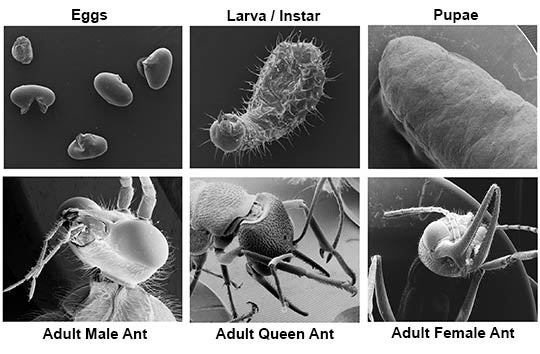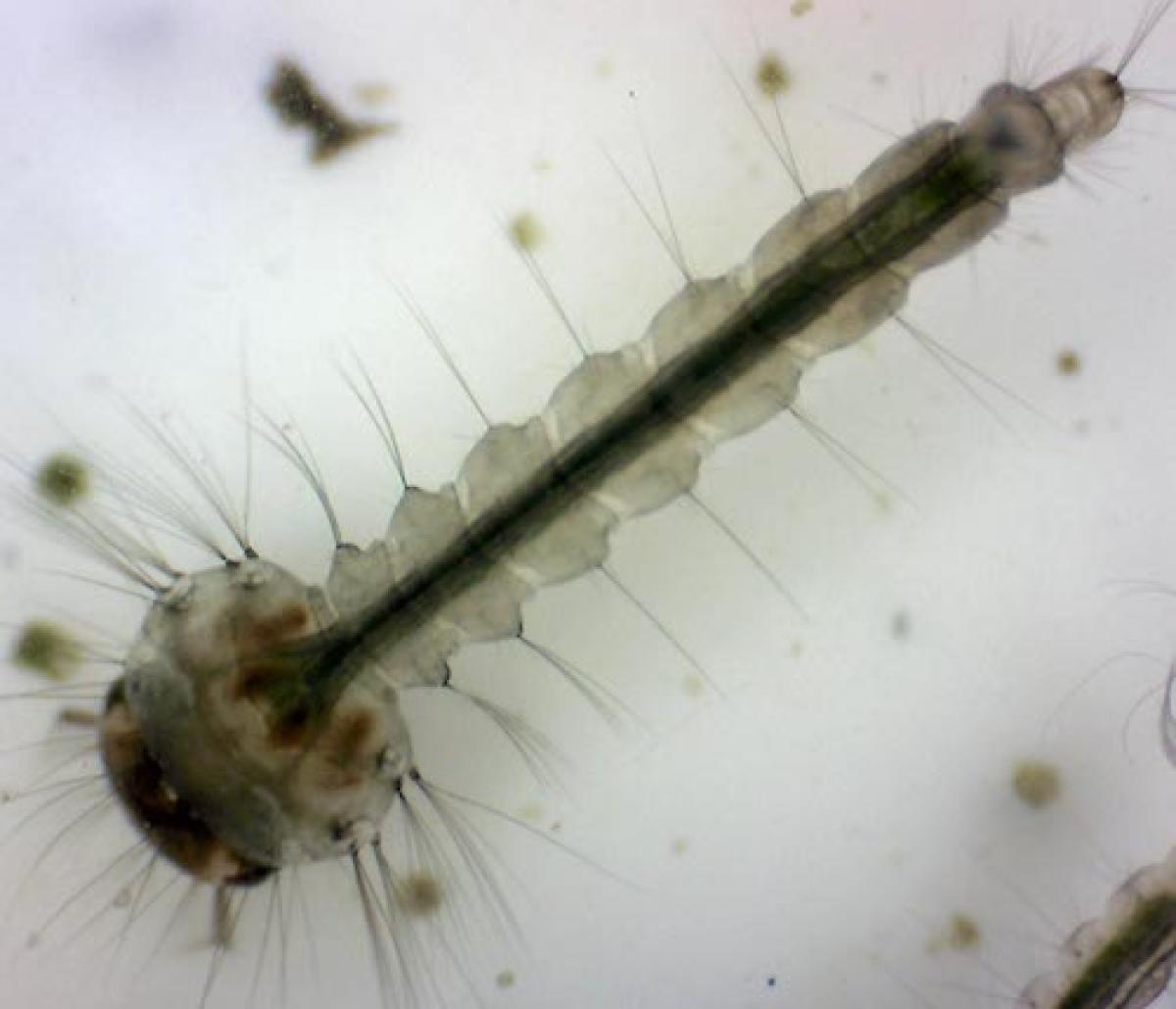Complete Metamorphosis Has Four Stages: Egg, Larva, Pupa, and Adult
In each stage of complete metamorphosis, the animal looks different than at all other stages. This is different from incomplete metamorphosis where the early stages of development look like tiny versions of the adult. Butterflies are an example of an insect that goes through all the stages of complete metamorphosis.

Complete metamorphosis begins with the insect hatching from an egg into a soft worm-like shape called a larva. Larvae have a very big appetite and can eat several times their own body weight every day. If humans did the same thing, babies would start out eating as much as 10 pounds of food each day. For insects, this super-sized larva diet makes them grow very fast.
Some larvae add more body segments as they grow. Scientists refer to these developmental changes as instars which are similar to how humans call their children babies, toddlers, or teenagers. For example, instead of being called a baby, a very young larva would be called an instar 1 and a teenager would be called an instar 3. The number of instar stages can be different depending on the type of insect.
At the end of the larval stage the insect will make a hard shell and inside it will become a pupa. At this stage the larva will stop eating and moving. The pupa appears lifeless, but one of Nature’s most amazing transformations is happening. Inside the pupa, the larva’s body will completely change into a fully grown adult. Once the adult leaves the pupa it slowly stretches out and relaxes under the sun for a couple of hours while its exoskeleton dries out and hardens.
Insects with complete metamorphosis include beetles, bees, ants, butterflies, moths, fleas, and mosquitoes.

Read more about: Metamorphosis – Nature’s Ultimate Transformer
Bibliographic details:
- Article: Complete Metamorphosis
- Author(s): Dr. Biology
- Publisher: Arizona State University School of Life Sciences Ask A Biologist
- Site name: ASU - Ask A Biologist
- Date published:
- Date accessed:
- Link: https://askabiologist.asu.edu/complete-metamorphosis
APA Style
Dr. Biology. (). Complete Metamorphosis. ASU - Ask A Biologist. Retrieved from https://askabiologist.asu.edu/complete-metamorphosis
Chicago Manual of Style
Dr. Biology. "Complete Metamorphosis". ASU - Ask A Biologist. . https://askabiologist.asu.edu/complete-metamorphosis
Dr. Biology. "Complete Metamorphosis". ASU - Ask A Biologist. . ASU - Ask A Biologist, Web. https://askabiologist.asu.edu/complete-metamorphosis
MLA 2017 Style

Mosquito spend part of their lives as wingless larva living in pools of water.
Be Part of
Ask A Biologist
By volunteering, or simply sending us feedback on the site. Scientists, teachers, writers, illustrators, and translators are all important to the program. If you are interested in helping with the website we have a Volunteers page to get the process started.

